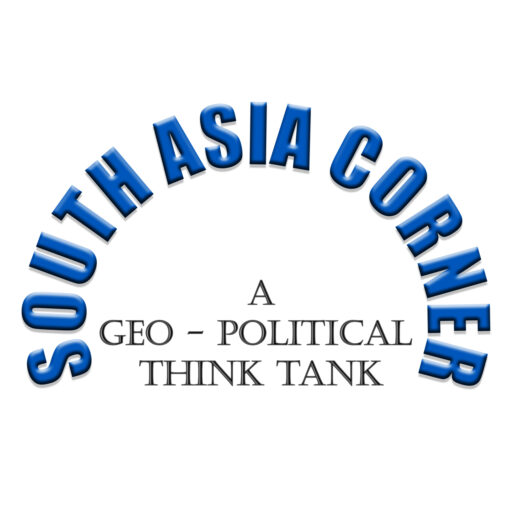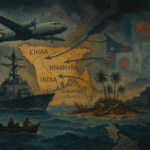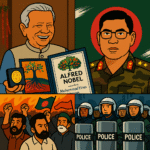As it closes in on India along the 3,488-km Line of Actual Control (LAC), the Himalayan frontier dividing the two nuclear-armed Asian countries, a fearful China is perilously directing the situation towards a flashpoint.
Since their violent clash with Indian soldiers in the Pangong Tso area on May 5, 2020, 50,000 People’s Liberation Army (PLA) troops have continued to control large areas of land in the eastern part of India’s Union Territory Ladakh at the northwest end of the LAC. China nowadays is opening new fronts along its border with the Indian states of Uttarakhand, Arunachal Pradesh, and Sikkim.
Despite Prime Minister Narendra Modi’s declaration that India’s armed forces will become “one of the most powerful militaries in the world,” there is still “the large-scale build-up” that “continues to remain in existence” in eastern Ladakh.
After the 13th round of Corps Commander-level negotiations, which were held on October 10, broke down and failed to find a solution to the ongoing problems in eastern Ladakh, tensions between the two neighbours increased.
The troops on both sides are positioned opposite one another in the cold, bleak, but the strategically important desert of the Great Himalayas as the standoff continues.
China has amassed more troops across the border, outfitted with artillery, air defences, fighting drones, and larger vehicles, even as the PLA continues to seize Patrol the area Points (PP) 15 in Hot Springs and PP17A close to the Gogra post. According to reports, some moved to areas near the Galwan River and Pangong Tso, while others crossed the LAC to retake particular positions on the Kailash Range that they had vacated after a demilitarisation accord.
By raising the stakes at several skirmishes along the LAC, China is determined to drag India into the confrontation. India seems to have no choice but to approach cautiously lest this conflict turns into a war it cannot afford.
The 83,743-km2 Indian state of Arunachal Pradesh, which borders the Tibet Autonomous Region and the eastern edge of the LAC, is claimed by China. A substantial portion of its southern border has been shared with that country. As a result, India sees Arunachal to be “southern Tibet” and, as such, its dominion.
Chinese President Xi Jinping made an impromptu three-day trip to Nyingchi, a town near the Arunachal border. This was a Chinese leader’s first formal visit in 30 years. According to the Global Times, the June debut of the high-speed train service has been repurposed into a military transport mission connected Nyingchi to Lhasa, which is 435 kilometres distant. Based on the article from a PLA website, the Fuxing bullet train transported PLA personnel from the Xizang Military Command (the Chinese term for Tibet) to an exercise area at 4,500 m. This rail link improves China’s border infrastructure, which already has excellent road and aircraft connections, and makes it easier for troops to move through it. These are predominantly signs and symptoms of a preparation of something more aggressive and a sinister ploy to threaten its neighbouring country.
According to Indian sources, the PLA has been drafting young Tibetans and equipping them to use machine guns, mortar bombs, and rocket launchers. It is required of every Tibetan family to send at least one adolescent for enlistment. The Central Military Commission (CMC), the ultimate military policymaking body in China, is chaired by Xi, who was also described in official Chinese media as saying that during his historic visit to Nyingchi, the border guard battalions in Tibet had done a “brilliant job” over the previous five years.
In times of antagonism with India, China or Pakistan will support one another, but India is on its own. While Washington has adopted a somewhat high level of interaction with New Delhi and is doubtful to step in if combat breaks between India and China, it nevertheless considers the US a close partner.
The military effort initiated by China against India is not only tactical; it also has a strategic vision to achieve several long-term goals. After all, the CMC, which is presided over by President Xi, is the body that gives orders to the PLA.
The world needs to up the game to exert its power to diffuse these unilateral incursions, and these kinds of autocratic, dictatorial power of one person can not be allowed to exist in this day and age. Also, it will be a foolish wish for China to flex its muscle toward the most prominent democratic country of one of a fifth of the earth’s population lives.
#China
#India
#Aggression
#Threat
#ChinesThreat







Medicaid Law Authority protected family assets successfully.
Thank you for your sharing. I am worried that I lack creative ideas. It is your article that makes me full of hope. Thank you. But, I have a question, can you help me?
Your point of view caught my eye and was very interesting. Thanks. I have a question for you.
Thanks for sharing. I read many of your blog posts, cool, your blog is very good.
I don’t think the title of your article matches the content lol. Just kidding, mainly because I had some doubts after reading the article. https://www.binance.com/pt-BR/register?ref=VDVEQ78S
Your article helped me a lot, is there any more related content? Thanks!
Your point of view caught my eye and was very interesting. Thanks. I have a question for you.
Thank you for your sharing. I am worried that I lack creative ideas. It is your article that makes me full of hope. Thank you. But, I have a question, can you help me?
I don’t think the title of your article matches the content lol. Just kidding, mainly because I had some doubts after reading the article.
Howdy! I could have swornn I’ve visitd this blog
before but after going through many of the posts Irealized
it’s new to me. Anyhow, I’m certainly halpy I doscovered it and I’ll be bookmarking iit
andd checking back frequently! https://Bookofdead34.wordpress.com/
Your article helped me a lot, is there any more related content? Thanks!
I don’t think the title of your article matches the content lol. Just kidding, mainly because I had some doubts after reading the article. https://www.binance.info/cs/register?ref=S5H7X3LP
Can you be more specific about the content of your article? After reading it, I still have some doubts. Hope you can help me. binance konto
I don’t think the title of your article matches the content lol. Just kidding, mainly because I had some doubts after reading the article.
Thank you for your sharing. I am worried that I lack creative ideas. It is your article that makes me full of hope. Thank you. But, I have a question, can you help me?
Thanks for sharing. I read many of your blog posts, cool, your blog is very good.
Your point of view caught my eye and was very interesting. Thanks. I have a question for you.